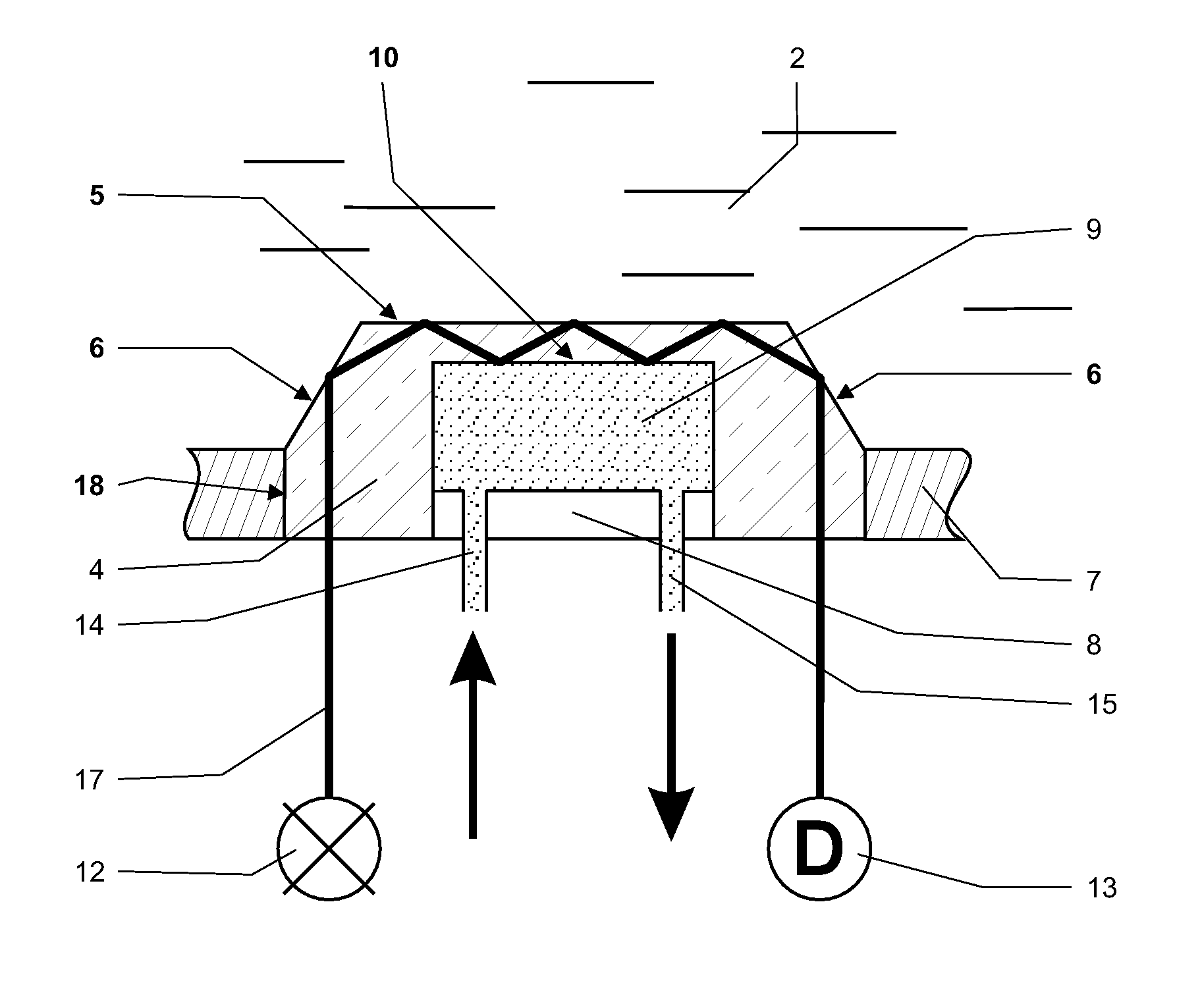Attenuated total reflection sensor
a total reflection and sensor technology, applied in the field of total reflection, can solve the problems of absorbing radiation into the atr body, presenting itself, and affecting the quality of the atr body, so as to achieve better control of the matrix
- Summary
- Abstract
- Description
- Claims
- Application Information
AI Technical Summary
Benefits of technology
Problems solved by technology
Method used
Image
Examples
Embodiment Construction
[0045]FIG. 1 shows an ATR sensor 3 which is installed in a process system or in a container indicated here by a container wall 1. A fluid measurement medium 2 in which the substance to be examined is dissolved is present in the system. Fluid measurement media can be liquid and / or gaseous. Dissolved substances that can be investigated with an ATR sensor include for example substances such as carbon dioxide, carbon monoxide or compounds containing hydrocarbons, but it should be understood that other substances can likewise be measured as long as they exhibit characteristic absorption lines and the sensor includes appropriately adapted components.
[0046]The core of the sensor 3 is an ATR body 4 with a measurement surface 5 which is in direct contact with the measurement medium 2. The ATR body 4 shown here includes in essence a hollow cylinder which is capped by a truncated cone, wherein the outside diameter of the hollow cylinder and the diameter at the base of the truncated cone are es...
PUM
 Login to View More
Login to View More Abstract
Description
Claims
Application Information
 Login to View More
Login to View More - R&D
- Intellectual Property
- Life Sciences
- Materials
- Tech Scout
- Unparalleled Data Quality
- Higher Quality Content
- 60% Fewer Hallucinations
Browse by: Latest US Patents, China's latest patents, Technical Efficacy Thesaurus, Application Domain, Technology Topic, Popular Technical Reports.
© 2025 PatSnap. All rights reserved.Legal|Privacy policy|Modern Slavery Act Transparency Statement|Sitemap|About US| Contact US: help@patsnap.com



